Taking Care of Earth -> surface
Surface: Definition and Characteristics
The surface refers to the outermost layer or boundary of an object or substance. It is the area where an object makes contact with its surroundings or with another object.
Characteristics of a Surface:
- Texture: Surfaces can have different textures such as smooth, rough, bumpy, or uneven.
- Color: The color of a surface can vary and can be used to identify different materials or objects.
- Reflectivity: Surfaces can reflect light in different ways, resulting in varying degrees of shininess or dullness.
- Porosity: Some surfaces are porous, allowing liquids or gases to pass through, while others are non-porous.
- Temperature: Surfaces can have different temperatures, which can be influenced by factors such as sunlight or heat sources.
Studying Surfaces
Activities to Understand Surfaces:
- Texture Exploration: Have students feel different surfaces and describe the textures using words like smooth, rough, soft, or hard.
- Surface Color Hunt: Ask students to identify and categorize objects based on their surface colors. For example, they can find objects that are red, blue, or green in color.
- Light Reflection Experiment: Use mirrors and different surfaces to demonstrate how surfaces reflect light. Students can observe the differences in reflectivity among surfaces.
- Porosity Testing: Conduct an experiment to test whether various surfaces are porous or non-porous by pouring water on them and observing the absorption.
- Temperature Sensing: Have students touch different surfaces and describe the temperatures they feel. They can compare surfaces that are in sunlight versus those in shade.
Key Questions to Consider:
- How do different surfaces feel to the touch?
- What are some examples of surfaces with different colors?
- How does light interact with various surfaces?
- Why is it important to understand the porosity of surfaces?
- What factors can influence the temperature of a surface?
◂Science Worksheets and Study Guides First Grade. Taking Care of Earth
Study Guide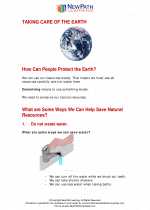 Taking Care of Earth
Taking Care of Earth  Worksheet/Answer key
Worksheet/Answer key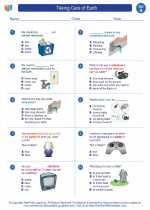 Taking Care of Earth
Taking Care of Earth  Worksheet/Answer key
Worksheet/Answer key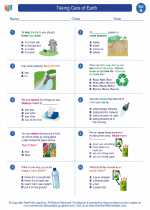 Taking Care of Earth
Taking Care of Earth  Worksheet/Answer key
Worksheet/Answer key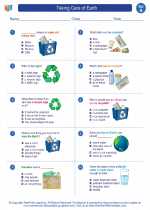 Taking Care of Earth
Taking Care of Earth  Vocabulary/Answer key
Vocabulary/Answer key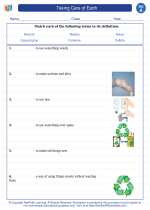 Taking Care of Earth
Taking Care of Earth  Vocabulary/Answer key
Vocabulary/Answer key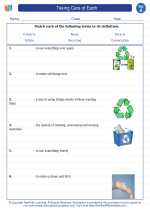 Taking Care of Earth
Taking Care of Earth 

 Worksheet/Answer key
Worksheet/Answer key
 Worksheet/Answer key
Worksheet/Answer key
 Worksheet/Answer key
Worksheet/Answer key
 Vocabulary/Answer key
Vocabulary/Answer key
 Vocabulary/Answer key
Vocabulary/Answer key

The resources above cover the following skills:
Concepts of Physical Science (SB1, SB2, SB3, SB4)
The student demonstrates an understanding of the structure and properties of matter by classifying matter according to physical properties (i.e., color, size, shape, weight, texture, flexibility).